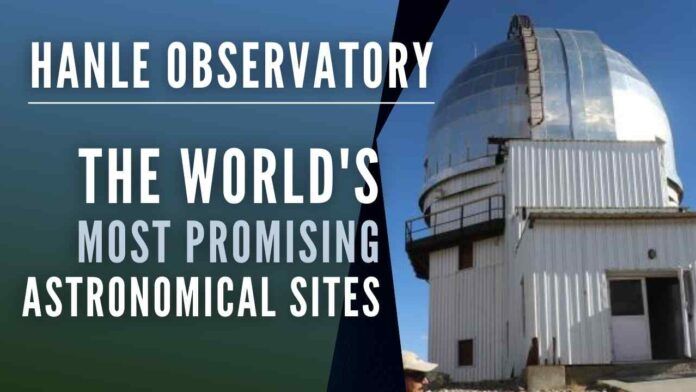
IAO Hanle in Ladakh emerges as a promising observatory site globally
The Indian Astronomical Observatory (IAO) located at Hanle near Leh in Ladakh is becoming one of the globally promising observatory sites, according to a recent study. It has several achievements under its name such as the faster method of predicting space weather under its belt.
Hanle Observatory is hailed as a popular and promising site belonging to the Indian Institute of Astrophysics (IIA), Bengaluru. The clear nights, minimal light pollution, background aerosol concentration, extremely dry atmospheric conditions, and no interruption by monsoon are among the reasons that have made it promising globally.
Established in 2001, situated at an elevation of 4,500 meters, the IAO is located in Hanle at Mount Saraswati near Leh in Ladakh, has one of the world’s highest located sites for optical, infrared, and gamma-ray telescopes.
Among its achievements are: “A faster method of predicting space weather has been identified in a type of solar radio bursts observed using the global network of solar radio telescopes called CALLISTO; a clue to the mystery behind the high abundance of Lithium, a trace element on Earth has been traced. An active galaxy found in a very bright state with 10 times more X-ray emission than normal, equivalent to more than 10 trillion of the Sun, and located five billion light-years away could help probe how particles behave under intense gravity and acceleration to the speed of light.”
An algorithm that can increase the accuracy of data from exoplanets by reducing the contamination by the Earth’s atmosphere and the disturbances due to instrumental effects and other factors has been developed while a new method to understand the atmosphere of extrasolar planets has been found.
“Besides, we now have clues to the mystery of solar flares and coronal mass ejections in regions on the Sun with disturbed magnetic fields that can help improve solar weather predictions,” said a release.
Earlier in the year, researchers from India and their collaborators had carried out a detailed study of the nighttime cloud cover fraction over eight high altitude observatories, including three in India. They used re-analysis data, combined from assimilation and observation extending over 41 years along with 21 years of data from satellites.
The study classified the quality of observable nights for different astronomical usages like photometry and spectroscopy on a daily basis. They analyzed datasets for the IAO in Hanle and found that the Hanle site has nearly 270 clear nights in a year and is also one of the emerging sites for infrared and sub-millimeter optical astronomy.
After examining several years of data of various Astro-climatological parameters, IIA had installed the two-meter aperture Himalayan Chandra Telescope at IAO, Hanle, in 2000.
Thereafter, due to the uniqueness of this site, several astronomical telescopes operating at optical and infrared wavebands have been installed at Hanle by several institutes in the country.
[With Inputs from IANS]
PGurus is now on Telegram. Click here to join our channel and stay updated with all the latest news and views
For all the latest updates, download PGurus App.
- UP Special Task Force arrests Mahadev app India head, his associate from Lucknow - April 26, 2024
- CBI raids Sheikh Shahjahan’s relative in Sandeshkhali; seizes huge cache of arms, explosives - April 26, 2024
- Will ‘exit India’ if forced to break encryption: WhatsApp to Delhi High Court - April 26, 2024







